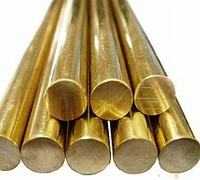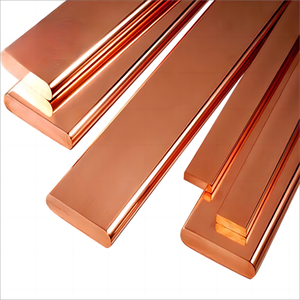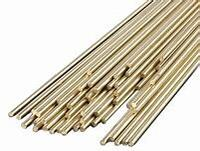1. Introduction
In the past 48 hours, a surge in global copper prices has reignited interest in copper recycling—especially among DIYers and small-scale scrap collectors. With copper rod price and copper strip price climbing due to supply chain shifts and green energy demand, properly stripping copper wire has never been more valuable. Whether you’re salvaging from old appliances, construction sites, or HVAC systems, knowing the best way to strip copper wire can significantly boost your returns.

Stripping copper wire isn’t just about removing insulation—it’s about preserving the purity and weight of the copper inside. Mistakes like burning copper wire for scrap or using dull tools can reduce your payout or even violate local environmental regulations. This guide gives you step-by-step instructions to strip copper wire safely, efficiently, and profitably.
2. Why Strip Copper Wire Correctly?
Scrap yards pay top dollar for clean, bare copper—often called ‘bright and shiny’ copper. Insulated or burnt wire fetches far less. Burning copper wire for scrap releases toxic fumes and is illegal in many areas. Plus, it oxidizes the metal, lowering its grade and value.
Properly stripped copper wire retains its full conductivity and market value. This applies whether you’re handling thick cables from air conditioning copper pipe installations or thin strands from household wiring. And if you’re working with related materials like copper strip, copper rod, or copper bonded ground rod, clean handling matters just as much.
3. Tools You’ll Need
- Wire stripper (manual or automatic)
- Utility knife (for thick cables)
- Heat gun (optional, for stubborn insulation)
- Safety gloves and goggles
- Bucket or bin for sorted copper
Avoid using pliers alone—they crush the wire and make stripping harder. For large volumes, consider investing in a motorized wire stripper, which can handle everything from thin copper strip wire to thick copper cable.
4. Step-by-Step: Best Way to Strip Copper Wire

4.1. Sort Your Wire First
Separate copper wire by type: THHN, Romex, coaxial, or appliance wire. High-grade copper includes solid-core wires from motors, transformers, or HVAC units—like those connected to aircon copper pipe systems. Avoid aluminum or copper-clad steel, which look similar but are worth far less.
4.2. Choose the Right Stripping Method
For thin wires (<10 AWG): Use a manual wire stripper. Match the gauge notch to your wire size and rotate gently to cut the insulation without nicking the copper.
For thick cables (like those used with copper earth rod installations): Slit the outer jacket with a utility knife, then peel it back. Use diagonal cutters to snip inner insulation if needed.
For long runs: A self-feeding automatic stripper saves time. Feed the wire through, and it strips and coils the copper in one go—ideal for stripping wire for recycling at scale.
4.3. Avoid Common Mistakes

Never burn insulation off—this is not only dangerous but also reduces copper value. Don’t mix copper with other metals; even small bits of steel (like in copper clad steel ground rod remnants) can downgrade your entire batch.
5. What About Other Copper Products?
While this guide focuses on wire, many recyclers also handle related items:
- Copper rod for welding or copper brazing rod: These are often pure copper and highly valuable.
- Copper strip (including 1mm copper strip, flat copper strip, or nickel plated copper strip): Used in electronics and earthing, these fetch good prices if clean.
- Copper bonded earthing rod or copper clad earth rod: These contain a steel core with copper coating—scrap value is lower than solid copper but still worth collecting.
- Copper round bar or copper flat bar: Often found in industrial settings; check if it’s solid copper or copper alloy strip before selling.
Always ask your local scrap yard what they accept. Some pay extra for copper strip near me deliveries if the material is pre-sorted and clean.
6. Maximizing Your Profit
Track copper rod price and copper strip price trends online—sites like Metalary or Scrap Monster update daily. Prices fluctuate based on global demand, especially from renewable energy and EV sectors.
Clean your copper thoroughly. Remove tape, labels, or solder residue. For copper pipe from AC units (like 15mm copper pipe or 22mm copper tube), flush out refrigerant oil before recycling.
Bundle similar items: a roll of copper strip, stripped motor windings, and clean copper rod welding scraps should be kept separate from mixed or dirty lots.
7. Safety and Legal Tips
Wear gloves and eye protection—copper edges can be sharp. Work in a well-ventilated area. Check local laws: in many U.S. states and EU countries, burning copper wire for scrap is a punishable offense.
If you’re stripping wire from live systems (e.g., during HVAC repair involving air conditioner copper pipe), always de-energize first. Safety comes before scrap value.
8. Conclusion
Stripping copper wire correctly is a simple skill with big payoffs—especially as copper prices rise. By using the right tools, avoiding burning or contamination, and understanding the value of different copper forms (from copper to copper welding rod to copper strip roll), you’ll get the most from every pound. Whether you’re a weekend recycler or a contractor clearing job sites, mastering the best way to strip copper cable ensures you’re not leaving money on the table.
Our Website founded on October 17, 2012, is a high-tech enterprise committed to the research and development, production, processing, sales and technical services of ceramic relative materials such as How. Our products includes but not limited to Boron Carbide Ceramic Products, Boron Nitride Ceramic Products, Silicon Carbide Ceramic Products, Silicon Nitride Ceramic Products, Zirconium Dioxide Ceramic Products, etc. If you are interested, please feel free to contact us.

